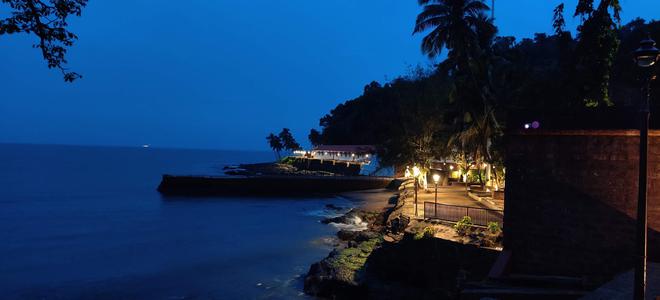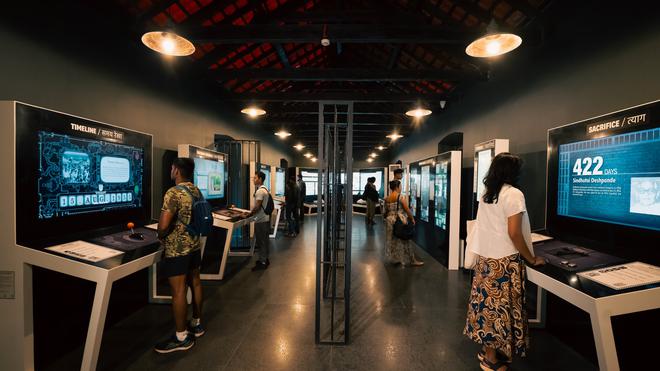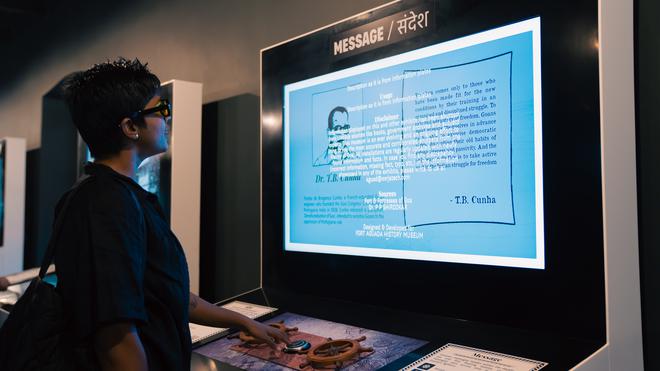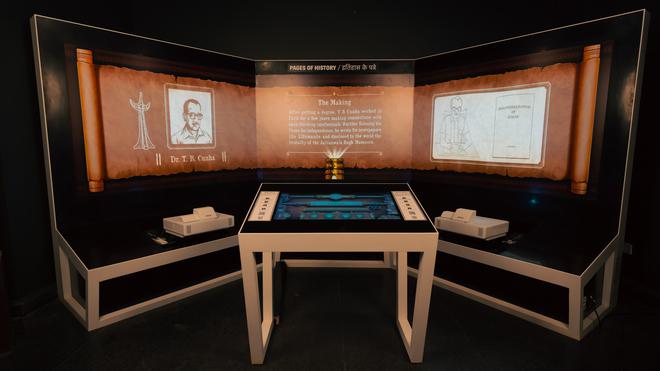There is so much more to Goa than just beaches, shacks and its party scene. With a history so eventful, Goa has many untold stories to tell. And, Aguad Interactive Museum: The Land, The People, and The Struggle is an effort in that direction. The recently-launched museum, which is set in a decommissioned prison, narrates the story of the former Portuguese colony as various blocks — landmarks and their significance, freedom fighters and their struggle, prehistoric findings, and the rich biodiversity of Goa.

“The Aguada Fort and Jail Complex is one of Goa’s most recognisable landmarks. It has been around for over 400 years. The jail complex moved to a new location in 2015-2016, and the erstwhile one has almost been reinvented as a repository of Goa’s history. This is important because while we have grown up with a good understanding of British history, Portuguese history is something that most only have peripheral knowledge of.
“The Museum showcases the history of the jail, of Goa from well before the Portuguese, the liberation movement that culminated in 1961, to today’s Goa,” says Naveen Chopra, group CEO, Waterfront Experiences, which is responsible for managing Aguad.
Innovative story vending machine
Commissioned by the Goa Tourism Development Corporation (GTDC) and designed and conceptualised by Oorja Interactive and Delta Technologies, the Aguad Interactive Museum, uses technology as a tool for storytelling. The narrative unfolds through 3D interactive maps, innovative Story Vending Machines, holographic installations and gamified time machines. There are 35 kiosks across three rooms.
The first, Goa — The Land, allows visitors to see famous sites and gives them the chance to use the “Discover Goa” console to learn about lesser-known facts about the city. Short story excerpts are dispensed by the inventive Story Vending Machine.
Gamified time machine

The second room, Goa — The Struggle, consists of the gamified Time Machine that provides visitors insights into historical dates with a simple pull of a lever. The interactive Freedom Fighters Wall enables visitors to connect with the stories of freedom fighters, while the ‘Message In A Bottle’ exhibit allows visitors to know in-depth the thoughts of the freedom fighters.
Vinayak Nayak, CEO, Delta Technologies, who has curated the show says, “There is an entire wall dedicated to freedom fighters such as T.B. Cunha and Libia Lobo. And on the opposite side, we have all the details of Operation Vijay — the “armed action” involving air, sea and land strikes to liberate Goa from the Portuguese rule. Visitors can also pay tribute by pressing a button — flowers will fall at the feet of the freedom fighters. People spend time here to read what everyone here has done for the freedom struggle.”
In order to end press censorship in Portuguese-colonised Goa, Libia Lobo and fellow freedom fighter Vaman Sardesai founded the underground radio stations Voz de Liberdade (in Portuguese), Goenche Sadvonecho Awaz (in Konkani), and the “Voice of Freedom” (in English).
Glimpse into Goa’s archaeology

In the third room, Goa — The People, viewers are given a glimpse of Goa’s ethnography and anthropology. It features captivating kiosks such as ‘Once Upon a Time’, which explores prehistoric findings, ‘Goenkar’, for discovering prominent Goans, and the soulful ‘Music of Goa’. Visitors can also witness Goa’s cultural vision in ‘Goa 2035’, through a captivating holographic installation.
Explaining the need for the museum to be without any tangible artefacts, Chopra says: “This place never was a museum. It was always a jail. It was the port and customs house; and a museum by itself would require artefacts. In this case, the digital format is probably the best way to do it. Being digital also helps, as our audiences are younger and familiar with digital formats.”
Well-informed panel

According to Chopra, the information put out has been fact-checked by historians, scholars, and experts such as Hansel Vaz for Feni and Parag Rangnekar for biodiversity. “If we ever need to change content, it’s easy to do. If there’s something that requires a tweak, it can be done overnight. We have 32 kiosks, and each tells a story, in about 50-70 slides. We have been able to use this space every effectively. Physical artefacts might have needed ten times this space,” adds Chopra.
The team has also placed in-built metrics to gauge the number of visitors and those who have actually gone through the slides. The museum also gives handouts to visitors so they carry something tangible from their visit. “We also have pledges that are mailed to visitors at a later date. An email/SMS goes to them saying you have pledged to not use plastic bottles, etc. We have got about 25 types of pledges,” says Nayak.
The museum also houses a cafe, a restaurant, a tea shop and a jetty-bar.
(The Aguada Port and Jail Complex is located in Sinquerim, Goa. Tickets are priced from Rs 200. For details, call 83800 11612)







